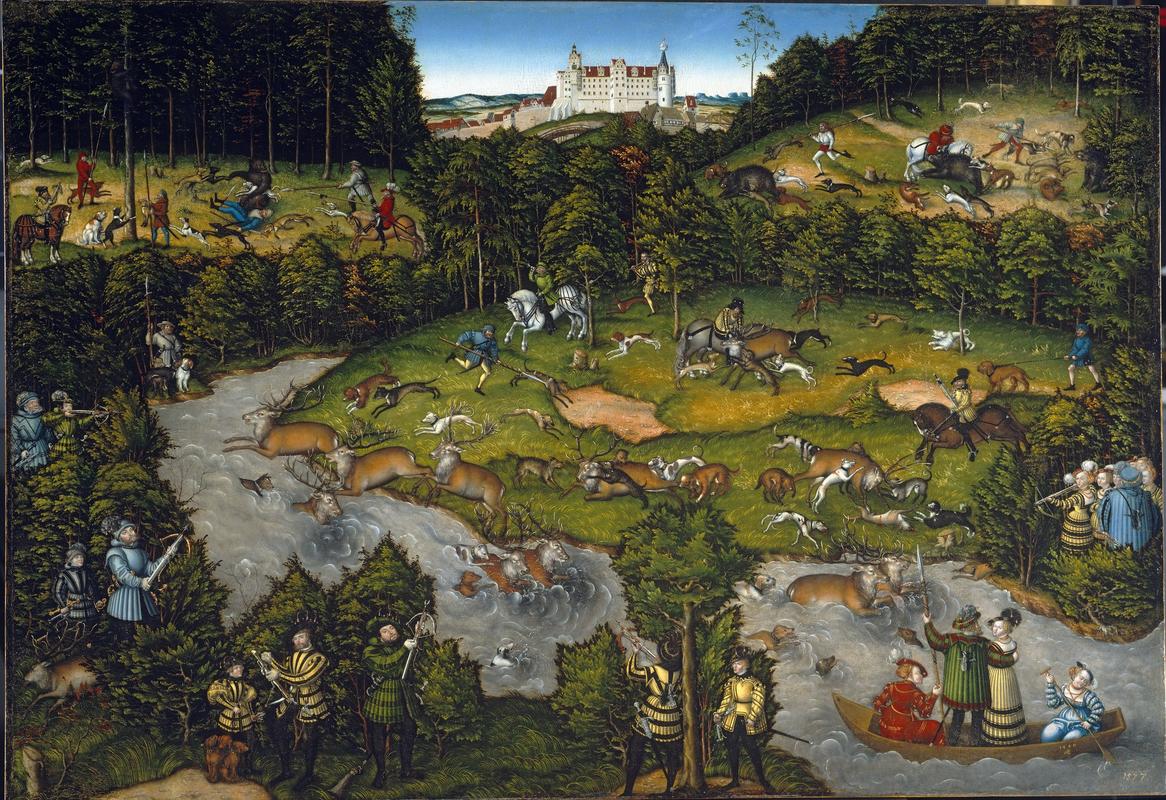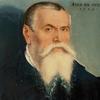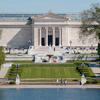More about Hunting near Hartenfels Castle

Sr. Contributor
Break out the magnifying glass for this work by Lucas Cranach – you’ll want to look as closely as you can.
You’ll discover that the women look the same as they do in every other painting. No surprise there for Cranach. It turns out that Cranach and Alberto Giacometti both had a nasty habit of making their subjects look the same across many works. But you’ll also see some exciting vignettes. A gorilla/bear hybrid – manbearpig perhaps? – is about to destroy one guy. Another guy is stabbing a boar. Stags are piercing dogs with their horns. It’s chaos! But these are just ordinary hunting things... right?
John Frederick I, also known as John Frederick the Magnanimous, was a Protestant prince and Elector of Saxony and he commissioned Cranach to make this work. He’s in the lower left corner of the painting wearing dashing, dark green hunting attire, which apparently meant a dress, a silly hat, and the most basic black leggings. If you think this outfit makes for some pretty impractical hunting gear, you’d be right. Although John Frederick strings his crossbow, he’s not actually going for the prize of the hunt. In typical aristocratic fashion, he lets his courtiers and dogs do the dirty work in the river right beside him.
John Frederick never let his magnanimity go to his head, though, and always remained a gentleman. You can see his wife, the Electress Sybille, standing at the right of the painting, dressed in an equally inappropriate getup, preparing to take the first ceremonial shot of the hunt. I know we’re still a few centuries away from camouflage and army fatigues at this point, but come on. Try something a bit more utilitarian. But utility was never the goal here. This fictional hunting scene is all about showboating. Stag hunts were a common way to demonstrate the wealth and power of those who could afford this elaborate and expensive ritual.
A very similar hunting scene at The Metropolitan Museum of Art from 1504 demonstrates that this masterpiece is the result of decades of practice. Although this painting wasn’t completed until 1540, Cranach frequently accompanied John Frederick’s grandfather Frederick the Wise on hunting excursions ever since the early 1500s, always bringing a sketchbook to record what he saw. Cranach calculated every last detail, especially the location of the castle. Cranach conveniently placed Hartenfels atop a rolling vista in the background to both emphasize its significance but also show what it was actually like. Centuries later, the royal palace still remains the most visible building in Torgau, Germany.
Even when it was first built, Hartenfels Castle was central to its community. The castle church was the first Protestant church built in Europe, and Martin Luther personally consecrated it in 1533. That’s no small potatoes. As a devoted protestant, John Frederick had a relationship with Luther, just like Hans Holbein the Younger the younger did. However, Holbein seemed more interested in taking commissions from Henry VIII and his litany of “divorced” wives. I’d say that the German Protestants were a much more wholesome bunch.
Sources
- Boehm, Barbara Drake, and Melanie Holcomb. “Animals in Medieval Art.” The Heilbrunn Timeline of Art History. Department of Medieval Art and The Cloisters, The Metropolitan Museum of Art. January 2012. https://www.metmuseum.org/toah/hd/best/hd_best.htm. Ac
- Cleveland Museum of Art. “Hunting near Hartenfels Castle.” http://www.clevelandart.org/art/1958.425#. Accessed March 7, 2019.
- The Metropolitan Museum of Art. “The Stag-Hunt.” Collection. https://www.metmuseum.org/art/collection/search/383708. Accessed March 7, 2019.
- World Monuments Fund. “Castle Hartenfels.” https://www.wmf.org/project/castle-hartenfels. Accessed March 7, 2019.












Hartenfels Castle is a popular destination for many people. The castle was built in 1483 and sits on the outskirts of town, overlooking the river Rhine.